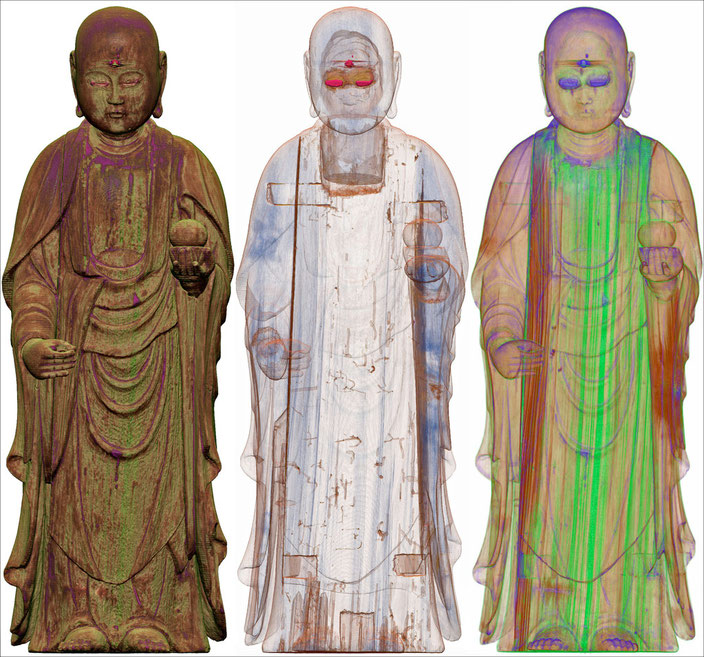Juzo monk

Video CT scan : 3D transparent VRT view
The scan of this wooden sculpture reveals:
- an assembly of five main wooden blocks held together with tenon and mortise joints, glue, wedges and pegs;
- a hidden device (bamboo and glass) to make the monk’s eyes glow;
- radiological signs characteristic of old wood in the central block;
- a defect in the alignment of the lower left mortise.
All these points suggest an asynchronous construction using a fragment of an old sculpture for the central part of the body but not the head, supplemented by parts carved from more recent timber. A sample was taken from the central part for Carbon 14 dating.
The scan was requested because the date was suspiciously early in relation to the supposed period in which the piece was made. For carbon 14 dating, samples are normally taken
as far as possible from the heart of the tree and as close as possible to the bark, so from the outside of the sculpture, which in this case would have given a much more recent dating and
revealed the addition of modern parts.
Video CT scan : 3D opaque VRT view
Video CT scan : 2D rotating MPR slices
Video CT scan : 3D half opaque VRT view with a frontal clipping plane
Video CT scan : 2D MPR axial slices


